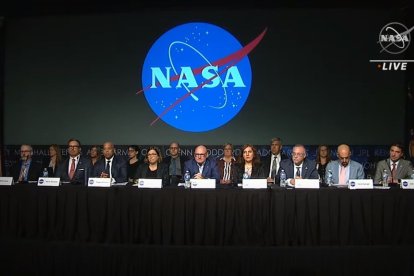NASA limits its conclusions about UFO sightings to "anomalous"
The space agency and the Pentagon indicated that the unusual phenomena that have occurred cannot yet be explained because they lack "high quality data."

Screenshot - YouTube NASA Video.
NASA offered the results of its first public report on the existence and presence of unidentified flying objects (UFOs). The main conclusion of the study is that, "due to the lack of high quality data," there is no concrete evidence to support whether there is extraterrestrial life.
In 2022, the space agency created a team made up of several experts who were dedicated to making this report. The purpose of the analysis was to "advance scientific understanding" of these kinds of phenomena. The final report is expected by the end of July.
Lack of high quality data is a constraint
In a hearing that lasted almost four hours, the experts pointed out that unusual phenomena that have occurred cannot yet be explained because the unclassified data which they have access to is "very limited." It is sourced from "civilian government institutions," private entities and "other sources."
Nicola Fox, NASA's chief science officer stated:
David Spergel, theoretical astrophysicist and chairman of the group that conducted the study, shared Fox's view on the need for more data collection and more rigorous analysis to understand the phenomena:
Two independent studies that corroborate each other
Along with the NASA study, the Pentagon also has a group designated to investigate these phenomena within its All Domain Anomaly Resolution Office (AARO). The difference between the two is that the space agency's analysis focuses on open data, while the Pentagon has access to classified information, since it studies national security issues.
Despite this, both groups work as a team to corroborate information.
Sean Kirkpatrick, director of AARO, reported that his office has investigated more than 800 cases, but 2% to 5% of them are "truly anomalous." He defined an anomalous incident as "anything not readily understandable to the operator or the censor [sic.]."
He further explained that most UAPs are "round or spheres," and most range in size from one-to-four meters and are described as "white, silver, or translucent metallic." Kirpatrick assured that they will have to continue analyzing the phenomena in the coming months and affirmed that:
RECOMMENDATION





















